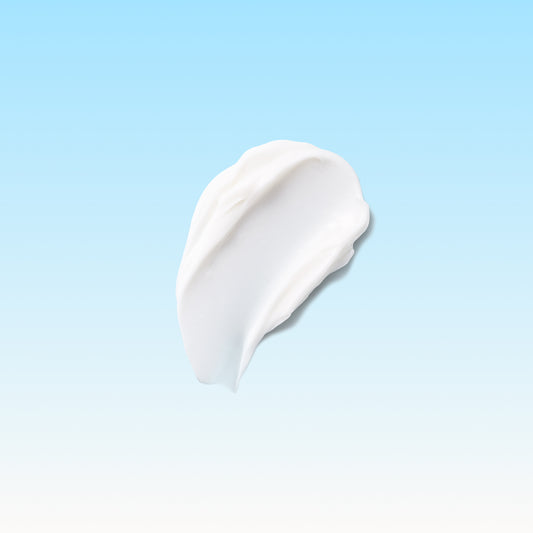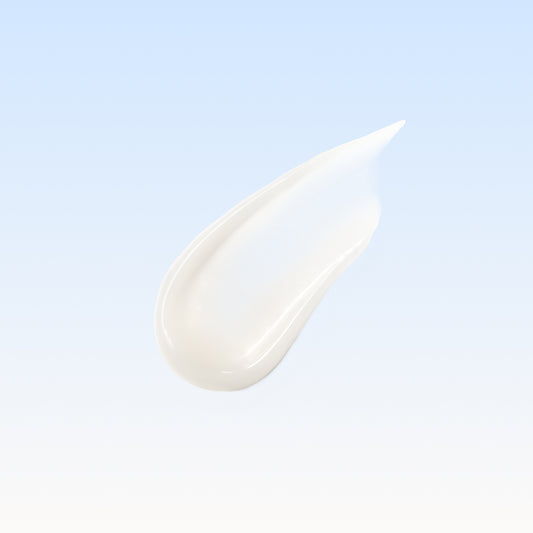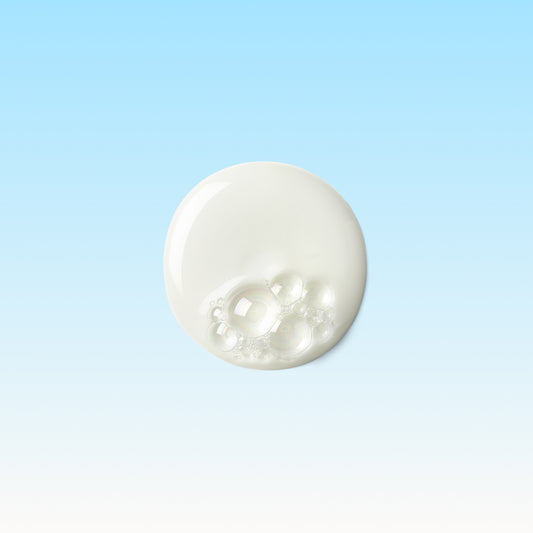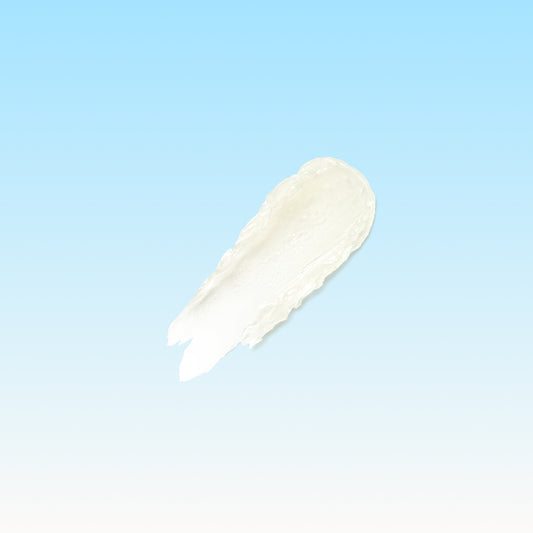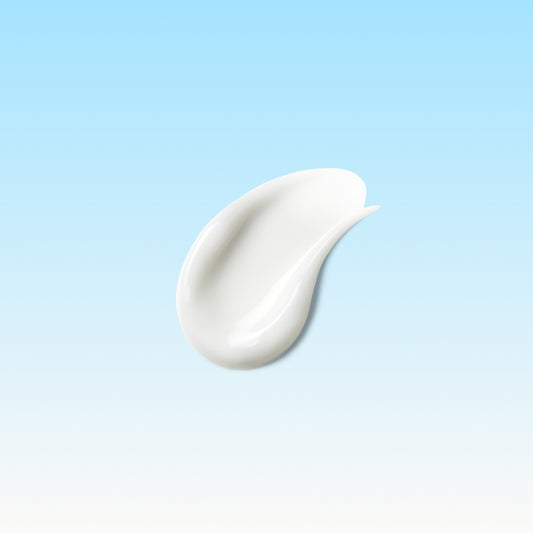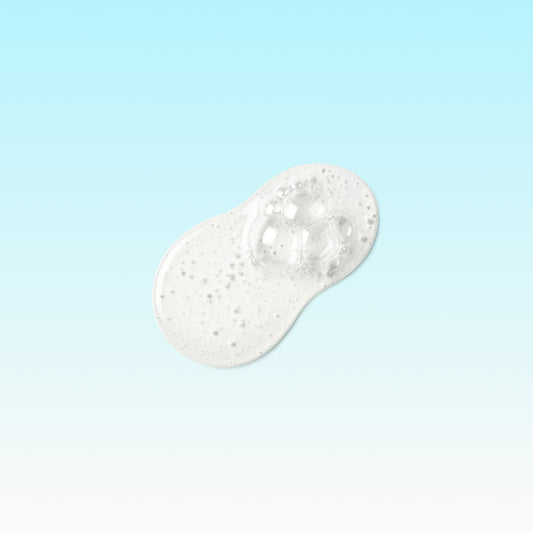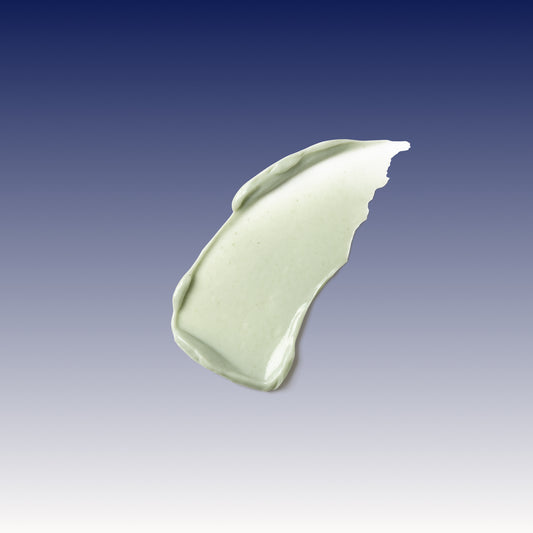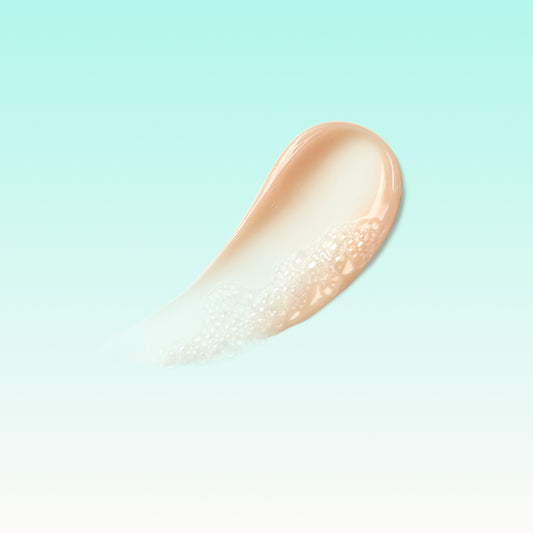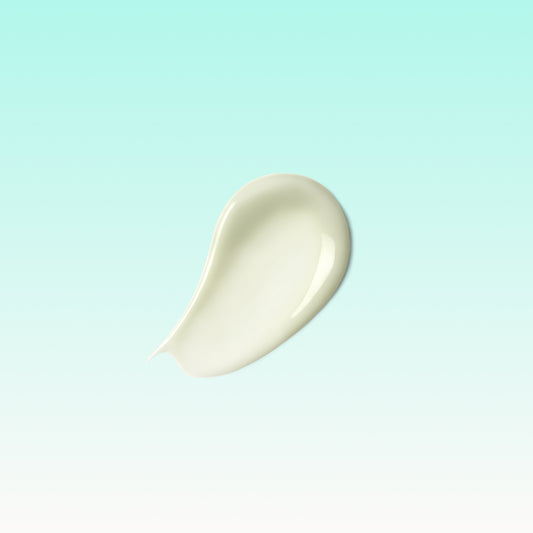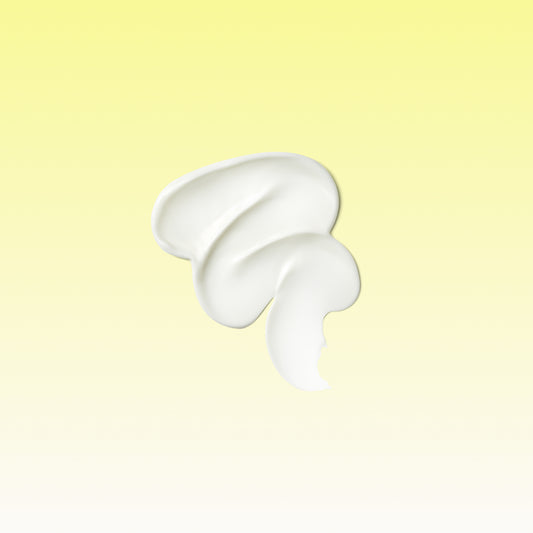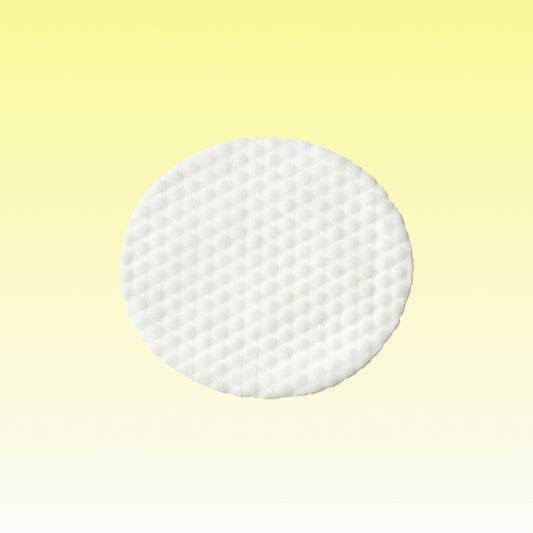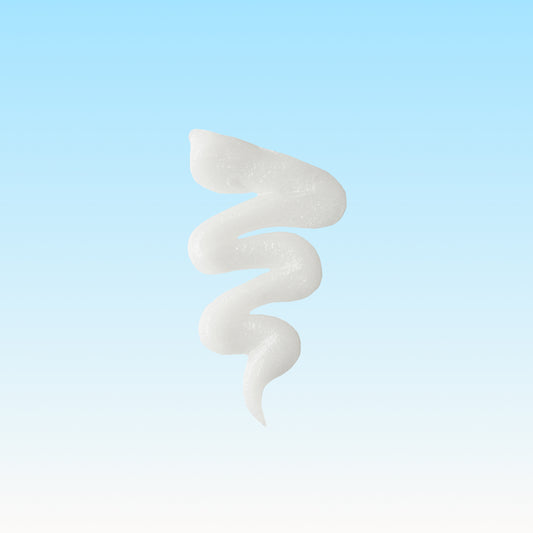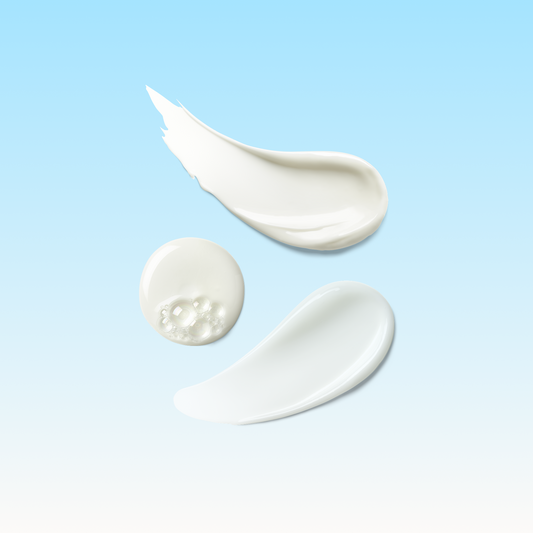S2 E7: The Science and Evolution of Aesthetic Dermatology with Dr. Doris Day
[Amy Gordinier]: Total Skin Nerds is brought to you by Skin Fix. We're clean, clinically active, and on a mission to deliver healthy skin.
Welcome to Total Skin Nerds. I'm Amy Gordinier, founder of Skin Fix. Total Skin Nerds is where I get to nerd out with some of the world's foremost experts in skin. We deep dive into issues related to skin disease, skincare ingredients, diet and lifestyle modifications to support skin health, and even spiritual practices and their skin benefits. For season two, episode seven of the Total Skin Nerds podcast, I'm excited to speak with Dr. Doris Day. Dr. Day is an acclaimed dermatologist, author, educator, and pioneer in aesthetics. She is also a sought after media expert in the area of cosmetic dermatology and lectures regularly, nationally and internationally, to her peers and to the public on the latest innovations in aesthetic techniques. I'm here with Dr. Day to discuss the fascinating and ever-evolving realm of cosmetic dermatology and the evolution of in-office treatments for restoring and resurfacing the skin. Before we dive in, I want to take a moment to thank everyone for listening to the podcast, the Skin Fix team and I would love to hear more from you. Please take a moment to leave us a review and let us know what you'd like to hear more of. We really would appreciate it. Stay tuned, skin nerds, this is going to be an amazing conversation.
Well, Dr. Day, it's so great to see you. Thank you so much for joining us on Total Skin Nerds, we're so happy to have you.
[Dr. Doris Day]: I'm so happy to be on, this is exciting.
[Amy Gordinier]: It's very exciting. We are excited to do a deep dive with you on in-office treatments for resurfacing and restoring skin. You are the expert, in so many things, but definitely the expert in in-office treatments and the latest, greatest things that we can do to help resurface and restore our skin. Hopefully do everything we can to avoid a facelift, to do all of the other great modalities that are available to us. We really wanted to just do a deep dive. The first one that we wanted to talk about, I am personally really curious about, is microneedling. Can you first just explain to us what is microneedling?
[Dr. Doris Day]: Microneedling is a process where tiny needles that are meant to be very precise, can be used to create channels into the skin at various depths. The early microneedles were basically rollers, so you would just roll them across the skin, and a lot of people tried to do this at home, which is a very bad idea because there's a lot of data that shows that a lot of the microneedles that people buy to use at home are not very well-made. Just think, if there's one dull needle or one needle that's a little bit bent, you are going to roll that across your whole face. If it's bent, it can also harbor bacteria and other germs and microbes that could then get into the skin and cause infections. Home microneedling is not a good idea, and on top of that, the data showed that it didn't help products penetrate better.
The idea of microneedling is that you create a control wound in the skin by creating these channels, and that as your body heals, it's going to stimulate collagen and help with rejuvenating the skin. I like it for in-office treatments, data has also new studies, and this was just at our Beauty Through Science meeting this past weekend, in New York City. We heard data that showed that the roller microneedles were much less precise and did almost nothing, even the in-office ones, compared to devices. My favorite device is SkinPen because that has a few qualities. One is, you can dial the depth of the needle, and two is they went through great pains in their testing, and in their research and development of this product, to make it sterile. One of the things that we heard about, and I think it was in New Mexico a few years ago, where HIV was transmitted because somebody used either the same microneedles, or the device wasn't properly sterilized from one patient to the next at a med spa, and that blood transmission, because it is a bloody procedure, you're going down into depths of skin where you're going to break blood vessels, ended up transmitting HIV.
[Amy Gordinier]: Wow.
[Dr. Doris Day]: You want to know who's doing the treatment, what device are they using, and is that sterility something that they can stand behind? With this, once the tip comes off, it cannot go back on, it will not work. If you know that that tip is only being used for you, and it also can only be used for so long, so this way you have great confidence that you're getting a proper device that goes to the depth that it's designed and tested to go to, consistently, and you'll get the results. Where I like microneedling, it's pretty good for scars and for aging issues, but I really like it for acne scars and for melasma, because with melasma, that's that patchy discoloration that happens, more in women than in men, and women who've been on hormonal contraceptives for more than three years, typically.
It doesn't happen in your first or second year of being on a hormonal contraceptive, but usually after three to four years, a little bit of sun plus that accumulation of exposure to the hormones, even five minutes on a cloudy day can create this discoloration that can look like a mustache on the upper lip, or just this reticular patchy discoloration on the forehead and cheeks and nobody likes it. But, because it's heat based, we're very careful about using heat based devices to treat it because in some cases it can make it better, but in many cases it can make it worse. We want to resurface it off, promote the skin cell turnover to help those pigmented cells that are inappropriately there, go away,` and microneedling helps exactly in that way.
[Amy Gordinier]: Okay.
[Dr. Doris Day]: The best part about any of these devices that we talk about for resurfacing, that I don't think enough is talked about, and we're just starting to hear more about it, is something that some of us have been doing for a long time. I've always thought that if I create a controlled wound in the skin, I need to feed it. For the longest time we would do CO2, and RBM, and microneedling, all these resurfacing things and just say, oh, go put some Vaseline on, or just go use a bland ointment, and we were afraid to put something on the skin. Well, now we know it's quite the opposite. Once I've done this to the skin, now I have exosomes, I have growth factors, I have topical antioxidants or brighteners that I have tested and know are safe to use on the skin, that not only improve the outcome, exponentially, but they also reduce the downtime and the recovery time from that procedure. For me, anybody who gets a treatment, who doesn't get it done along with a specified regimen to amplify the result, is missing the point. It's like only putting on one pant leg and deciding, well, that's enough, I'm going to go out with one pant leg on. Doesn't make any sense.
[Amy Gordinier]: Do you, from years of doing this know specifically which topicals, dependent on the patient's concern? Would one patient get an antioxidant, another get a growth factor? Do you have specific regimens?
[Dr. Doris Day]: Yeah. When I see a patient in consultation, we talk through what are the issues? I analyze the skin, you touch the skin, you kind of feel like is it laxity? Is it a combination of things? What exactly is going on in the skin? Where are they in their life? Are they peri or postmenopausal? Are they still in their early years? One of the things about doing something like microneedling for acne scars in someone who's younger, if you are in your twenties or early thirties, or just approaching 30, and you have acne scars, what I've learned over 25 years of practice is that acne scars that look mild in your twenties, look deep in your forties, because over time you have collagen breakdown. Now, I'm much more aggressive about treating acne scars in my patients in their twenties, because I know that they can still make collagen. If I can create this control wound and then feed it and nurture it right, I can potentially even erase most acne scars and make better collagen for when they're older, and they won't have bad looking acne scars.
[Amy Gordinier]: Amazing. For acne scarring specifically, how many treatments typically would it take to get that scar to smooth out?
[Dr. Doris Day]: I always say three to five, and I'm a big fan of combination treatments. Having added in exosomes, and even now I'm writing a book on the skin microbiome with a very smart PhD, Thomas Hitchcock, and he developed a line of skin probiotics that actually contains C. acnes, the bacteria that we all think causes acne, what we're learning and what you'll see in the book is that it's strains of it. We replace the bad strains that are causing this acne problem with the better strains that are actually more present in people who don't have acne. We find that we can even improve things like acne scars and even wrinkles. It's so interesting to see that, when you use a product that improves inflammation in the skin, wrinkles look better, and that makes me think that, because at the bottom of the wrinkle, the skin is different than at the top of the wrinkle, the collagen is more damaged.
I think there's micro inflammation going on, and when you do something as simple as reducing that micro inflammation, even without fillers or lasers or anything, the wrinkles look softer and sometimes even go away. It's really understanding the right skincare for you, the right treatments in office for you, and then how to maintain those treatments. It's a global approach, it's diet, it's lifestyle, it's topical, and then it's in-office things as well. When you put it all together, even if all the lines and wrinkles aren't gone, your skin looks so much better and you feel better. I always say, I don't want you to just look better, I want you to be better.
[Amy Gordinier]: Yeah. No, I love that. If you were doing microneedling as part of an anti-aging regimen, or a way to just keep your skin looking glowing, and keep your collagen going, how often would a patient see you for that?
[Dr. Doris Day]: I'm very careful, in somebody who has otherwise really good skin, doesn't have a specific problem about doing something like microneedling, because everything has a potential for an adverse event. You have to be willing to risk a scar or something not going right, even when it's done properly in order to have that treatment. If you don't have a real problem with your skin that you're trying to address, but you're saying, oh, I just want to keep my collagen good, that's not where I recommend microneedling, because I'm still creating a wound in the skin and I just don't want to do that in someone who doesn't already have an issue with the skin. I don't do it for maintenance of good skin, it makes me nervous, because if I could create a flaw, potentially, theoretically, hypothetically, even though we haven't, but we could, I don't want to do that in someone who doesn't have an issue to begin with.
[Amy Gordinier]: I'm someone who's genetically prone to keloids. I have a really big keloid on my abdomen from having shingles, and I'm terrified of microneedling because I'm worried that I'll scar.
[Dr. Doris Day]: The scarring wouldn't necessarily be on the face, I've seen horrible keloids on the neck and jawline.
[Amy Gordinier]: Okay.
[Dr. Doris Day]: I would just be careful. You're not the person I would recommend it for. Also, a keloid scar or a hypertrophic scar, which isn't quite a keloid scar. Not all raised scars are keloid, sometimes they're just overgrown scars. A keloid is when it overgrows the boundary of the scar itself, and sometimes, actually, I treat those with lasers, believe it or not. We've done amazing work, I've had quite a few patients who are either survivors of burns over a large part of their body. I have one guy who was a sole survivor of a plane crash, and he had burns over 80% of his body, and he came in and he was just miserable. Now he made the cover of Burn Magazine, so I was so proud.
[Amy Gordinier]: Oh, amazing. Amazing.
[Dr. Doris Day]: Yeah. We even restored some hair follicles, so they weren't gone, they were just traumatized from the scarring around it, and he's just so much more comfortable. Now we're treating scars with CO2 lasers and finding that, when we combine that with strong topical steroid, because now again, through the lasers, we've created channels into the skin, and instead of injecting the steroids, which is painful and hard because the skin is so hard from the collagen overgrowth, by using the topical steroid in a strong concentration, it does even better than when we inject it.
[Amy Gordinier]: Amazing.
[Dr. Doris Day]: It's really amazing. Yeah.
[Amy Gordinier]: There are multiple ways to create these channels, microneedling is one, lasers are another. Interesting.
[Dr. Doris Day]: Microneedling with radio frequency is yet another, that's really nice.
[Amy Gordinier]: Now, does the SkinPen provide that radio frequency as well?
[Dr. Doris Day]: No.
[Amy Gordinier]: No?
[Dr. Doris Day]: No.
[Amy Gordinier]: Okay.
[Dr. Doris Day]: No heat.
[Amy Gordinier]: Okay. Now, why would people put plasma on their skin during a microneedling treatment, or after a microneedling needling treatment? What is that all about Dr. Day?
[Dr. Doris Day] It's not something that I generally do, I don't think it does a whole lot. Maybe it reduces redness a little bit, but the other things that I have between the peptides and growth factors and exosomes, I think they do so much more that the charge for the PRP, PRP is Platelet Rich Plasma. What we do in that process is we take some blood, and then there's a few different brands, I use a one called ProGen because I do it for the hair, and I think it works great for that, but that's injected. Then we spin it down, separate out, and remove the red blood cells, and then what we have left behind is this beautiful golden liquid that is rich in platelets, and platelets deliver these growth factors that help with restoring quality to the skin, so they can reduce inflammation.
Maybe if you put it on topically, it does a little bit something in reducing redness, but I don't think it's reliable enough, and I think we have so many other things that are reliable. The upside of using it is that, well, it comes from you, so chances are it won't do anything bad, although once you take something out of you and spin it down, it's not really of you anymore, so that's why some people like it because it's autologous, it's from them. But I just find that I have so many things that I can use. I use a lot of Topical Sculptra and Sculptra is something I inject, typically, for storing your body's own natural collagen, and things that I would typically inject I'm comfortable putting on the skin that has been having this control wound, whether for microneedling or laser or other things. I use Topical Sculptra mixed with my growth factors and sometimes exosomes, topically, and then we put a mask on top and then sometimes some cooling, and it just helps reduce the redness, improves the outcome, and just makes the treatment much more pleasurable.
[Amy Gordinier]: That's amazing. Now, did you come up with that on your own? Is it just sort of trial and figuring things out, and assuming if you can inject it, why not put it through a channel that you've created through microneedling? Or how do you come up with these cocktails?
[Dr. Doris Day]: Well, one is that I do everything myself. Not all the microneedling, I have a nurse who does some of that, but I do all my own injectables, and in the beginning, I practiced on my mom because she's such a good sport about it. She looks so good, at 89, she barely looks 50, so she looks great. But, she also has good genes, I must say. I used to do it with hyaluronic acid, and I thought, well, if I'm doing something to the skin, I inject the hyaluronic acid, but if I have this injectable grade stable hyaluronic acid, then I want to see about applying it to the skin, to see if I get better results, and if I've wounded the skin, then I've broken down the resistance of the skin from accepting those particles. It actually does work, it creates a form of skin hydration. Then I wanted to have particles that were a little bit more stable and might last a bit longer, and that's where I thought about the polylactic acid, which is Sculptra, when it's in the sugar family, but it's noninflammatory. It will help stimulate the collagen in the skin, and I don't do split face studies because I don't think that's ethical. I mean, if you get a better result on one side or the other, it's hard to catch up on the other side.
[Amy Gordinier]: Yeah, no, absolutely. Who wants a split face when it comes to this kind of thing?
[Dr. Doris Day]: Exactly.
[Amy Gordinier]: Yeah.
[Dr. Doris Day]: That's why I stopped doing a lot of clinical trials is because they were using one product on one side, and one product on the other side, and I thought, that's horrible for that patient. They have to walk around asymmetric and we're all a little bit asymmetric anyway, and then they have to try to catch up on the other side, and I don't know that I would ever see myself the same way. I would always believe that it wasn't quite that way before. You have to really want to be in that trial, and I just thought it was really unethical, so I stopped doing it. The FDA, it's funny what they allow and what they don't allow. They have a lot of problems with exosomes being injected, and exosomes are very broad.
[Amy Gordinier]: Tell us what they are, because I don't think a lot of our listeners necessarily know what exosomes are.
[Dr. Doris Day]: A lot of doctors don't know. It's a new thing to hit the market, and it's easy to just get excited about the word exosomes, but they're not really a thing unto themselves, they're really just signaling molecules. I think of them as a delivery system, kind of like words. When I put words together, I convey a meaning and I create a response, same thing with exosomes. They're created by cells that are annoyed, so cells that have been traumatized in some ways, want to repair that damage, they want to protect themselves from that irritants, and so they create these membrane bound vesicles, which they then excrete, and within those vesicles, are growth factors and peptides and a whole bunch of things. Depending on the source, and that's what changes a lot, so there are some that come from Wharton's jelly, which is what's in the membrane around the umbilical cord, some are derived from that.
Some are derived from pooled platelets that hospitals have that are just about to expire. Some are derived from placenta. There's a whole bunch of different sources of these, so depending on the source and the quality, and then how they're processed, will give you a sense of what those exosomes could do, and whether or not they would help you. That's the part that gets hard, and that's the part where the FDA has a problem. Using them topically, so far, the FDA has said that's okay, but injecting them, they're saying, wait, hold on, we need some more data on this. These are all acellular, meaning there's no DNA in them, typically, and some are even animal derived, or processed through an animal derived process. There's things to ask and know, but most people talk about the quantity of the exosomes, and they talk about billions of exosomes that are present in the vial, but to me, that's not as important as the quality of the exosomes and what they could do, and the science and the data behind it. There's a couple of companies that are doing some really good work on this, and there's a lot of work yet to be done, but I do think that there are good practical applications for these.
[Amy Gordinier]: You purchase them then directly from these ingredient suppliers. Okay,
[Dr. Doris Day]: No, from the companies themselves. There are companies that get the ingredients from their suppliers, and then they create the exosomes, they extract the exosomes, or they create that process of annoying those cells to get that to create these exosomes, and then they have to separate out and isolate those exosomes, and then package them for us to then buy. So that's a whole process, does that make sense?
[Amy Gordinier]: Yes, no, absolutely. They're all, though, human or animal derived at this stage?
[Dr. Doris Day]: Yeah, they should all be human derived, most of them are human derived, but in some, there's a step that might involve some animal process, so you have to ask those questions.
[Amy Gordinier]: Okay. Okay, great. Let's talk a little bit about Fraxel laser. Another thing that I have been terrified to try because of my propensity to scar, but friends of mine have had amazing results. Tell us about it. Is it something you like? What is it? Who is the candidate for it? And what do we need to know?
[Dr. Doris Day]: I have the Fraxel 1927. 1927 is the wavelength, and that really helps for discoloration in the skin. If you have sun damage, it can reduce sun damage, which actually reduces skin cancer, because if you're getting rid of the sun damage, you're getting rid of those atypical or dysplastic cells to some extent, that could convert to pre-cancerous or even later on skin cancers. It's not just making your skin look better, it's actually making your skin better, and it's a nice treatment, depending on the amount of energy you put in, will determine the amount of downtime that you'll have from the treatment. There's three different levels of Fraxel. There's the 1927, then there's the 1550, and then there's a Fraxel CO2. Fraxel is just a brand, and those are three different levels of the laser. When you add in the 1550, that theoretically helps with wrinkling and scarring, and some people like it.
I didn't get that one, I wasn't that impressed with it, so I don't do the 1550, I just do the 1927, and I like that. I'm looking at another device, which I haven't committed to yet, but I'm playing with it right now, by Sciton that has a 1927 and also a broadband light. That combination, to me, is really interesting, and that's something that I might end up doing in combination, something I'm looking at in terms of newer technology that might have some value and advantage. Then the CO2, I have a different CO2 laser, so it's not really the brand to ask for, it's the person who's doing the treatment, and knowing that they know how to set those energies to allow for the amount of downtime that's going to work for you. The lower the energy, the less downtime typically, and then you have more treatments to get results, and then depending on what you add to it, you might increase or decrease the effect in the downtime. Again, you have to put the topicals on after. After do my 1927, in this case Fraxel 1927, I always add on growth factors, and I always add on elements that are going to reduce the downtime, reduce that sting, that heat from it, and I don't really worry about that with people who make keloids, it's more superficial, and I've not seen that as an issue.
[Amy Gordinier]: Okay. With the 1927, in particular, which you said is not quite as deep, so with Fraxel, you're really sort of resurfacing layers of the skin. Correct?
[Dr. Doris Day]: Yes.
[Amy Gordinier]: Okay. So with the 1927, what is the downtime? What could someone expect to see in the mirror after that happens, and how long do they need to think about staying at home?
[Dr. Doris Day]: Yeah. Well, the nice thing is you don't really have to, the typical healing time is about five to seven days. The more energy I put in, the more intense that time is, but it's still about five to seven days. What happens is, right after you feel hot for about 30 minutes and you're bright red, and then that goes down, and then over the next three to four days, it starts to get a little sand papery, a little bit rough, but you could put makeup on top even the next day, but because the skin is rough, so when you put makeup, you want to use something lighter and more sheer, as opposed to something heavier that's going to attract to all the skin that's starting to slough off, and that'll make your skin look bumpier. You want something lighter and sheer just to take the edge off.
It can almost look dirty, like you need to wipe the stuff off your skin. About day six, seven, I like a very gentle exfoliation just to get that off, and then it feels soft and smooth and people just love it. But again, it has to be done in a series, usually I say the series is five to seven at three to four week intervals for the initial, and then maintenance once every six months or so. Be careful for people who have or who are prone to melasma, because I've seen people, I don't do it for people with melasma, or very rarely, I can't even think of the last time I did, but it could be fine on the first few times and then all of a sudden not fine. Or it could be fine if you do it in the winter, but then when you get to summer, the melasma could get worse and then it's harder to fix.
I'm very careful on people who have melasma or who we've improved their melasma. We want to keep them improved, and you can't cure melasma, there's no cure for it. We're improving it, but you don't want to do things that are going to trigger it or irritate the skin to have the melasma come back, and even things like hot yoga and maybe even saunas can trigger melasma and people who are super prone to, it's not just sun, it seems that heat is an issue.
[Amy Gordinier]: Interesting. Okay. If you had melasma or the mask of pregnancy during pregnancy but haven't had it since, would you be considered someone prone to it?
[Dr. Doris Day]: Yeah. If after pregnancy and you weren't on the pill for a long period of time, then I would consider it. I just have to see the skin to know, because the last thing I want to do in helping someone get better is to make things worse.
[Amy Gordinier]: Yes. Well, what's very clear Dr. Day is it's so important to find a physician who knows all of these nuances. They're not really nuances, they're more important than that, but just really understands the specific issue, and the specific person, and what things you might need to take into consideration. Just going to a med spa to get microneedling or Fraxel, sounds like not something you want to do.
[Dr. Doris Day]: If you look at the name of your podcast, dermatologists are the ultimate, the epitome, of total skin nerds.
[Amy Gordinier]: Right.
[Dr. Doris Day]: We are total skin nerds and we love it. We wake up every day going, yay, I get to do this again. It is really exciting to be in dermatology at this time, because I do both medical and cosmetic dermatology, and I think that when you help somebody look better, you change their whole life because everybody cares about how they look, and it's not by accident that we care, it's really tied to survival. When people stop caring about how they look is when I worry about them, because that means that something is very wrong, whether or not you choose to do things, it doesn't mean that everyone needs to have a treatment to want to look better, but they have to have an interest in their appearance to some extent.
For people who just say, oh, you know what, I'm going to age gracefully. I came up with the line that there's a difference between aging gracefully and aging helplessly, that not doing anything, and going out, and staying up late, and drinking, and getting too much sun, that's poisoning your skin, that's not aging gracefully. What I'm trying to do is reverse some of those lifestyle, or what we call epigenetic things that have happened, and optimize your genetics so that you can truly age gracefully. It's not changing how anybody looks, it's seeing their beauty, helping them celebrate and enhance it, but not changing it, and that's where we're at, and that's the study of dermatology. It's the study of structure and function of the skin, and it's truly understanding that it is tied to your health and wellbeing, it's not frivolous and it's not superficial.
[Amy Gordinier]: I love that. I love that. So true. Let's talk a little bit about cellulite. Speaking of the appearance of your skin, is there anything that you have found to be helpful to those of us that suffer from genetic cellulite?
[Dr. Doris Day]: That's everybody. We say 95% of women have cellulite, and the other five people think they have cellulite. It is a very, very common problem, and the problem with cellulite is it's not a weight-based problem, it's not about losing weight at all. It's often in women who are thin, so weight is not the driver of it, hormones do seem to have some influence, it is more prevalent in women than men, so estrogen may play a role or lack of estrogen. One of the things that's hard about cellulite is that there's a dimple, but there's sometimes also skin laxity, so even if you could get rid of the dimple, if you don't improve that skin laxity, you're still not going to have better enough skin to make it better. A lot of the newer treatments for cellulite don't address all those different factors.
They can break up the platysmal band, the bands that the fat is herniating around, so we kind of understand the process of cellulite better. A lot of companies go in and they have a device that will either chemically dissolve, like QWO, will chemically dissolve the band, and that should stay away for a year or two, and then maybe it'll reform. Then there's other devices that go in and simply snip it, you go in just with a blade, basically in a whole machine that goes in and just whacks the whole platysmal band, which can also leave marks, I've seen scars left behind from that. Then there's newer devices that are out, that are supposed to help the cellulite by punching holes in them, not completely erasing them, thinking that's just going to relax them a bit.
They're all okay, there's nothing that I've seen that's been amazing. What I've been doing in my office for cellulite is I've been using topicals that have retinoic acid, hyaluronic acid, a little bit of salicylic acid, and vitamin C, to even up the tone, strengthen the skin, and firm the skin itself a little bit. That makes a difference, topicals do help, and that makes some difference. Then I combine that with lasers that are going to stimulate collagen to firm the skin, so I'm taking care of the skin laxity. Lastly, I use biostimulators like Hyperdilute Radiesse, and Radiesse is made up of calcium hydroxyapatite, which is not natural to the skin, but it's natural to the body, it's a precursor of bone. When you make it at a certain concentration where you take one CC of the Radiesse and add one CC of saline, you combine that together, it's now more watery, it becomes a bio stimulator.
I use a cannula to deliver and just go under the skin and just feed where the dimple is and across it a little bit. Now I've firmed from the outside, firmed through the skin, and now I've given it some stimulatory support to try to reduce that dimple. When I go in with the cannula, I'm breaking up those bands, I'm punching holes in them, so I'm [inaudible 00:32:47] and that seems to help with relaxing the band. It's something that I've made up, but it does seem to help the cellulite, and it takes a few treatments, but it does help, and I've been happy with that. The good side of it is that you have firmer skin, and then of course, exercise always helps, drinking enough water always helps, balancing out your hormones, all of those things are good to do anyway, for cellulite in general. But, these treatments do work, it's an investment and it has to bother you enough to be worth the investment.
[Amy Gordinier]: Okay. Is there downtime to that Dr. Day, or is that really?
[Dr. Doris Day]: Typically, no. You can bruise a little bit from the subcision with a cannula, but a cannula is a blunt needle, so it's not designed to puncture a vessel, it's designed to negotiate around it and push the vessel out of the way. The only thing I'm trying to puncture is the bands, platysmal bands, they're just fat bands.
[Amy Gordinier]: Okay, interesting. You mentioned there was a new device that you were playing with, but what have you seen that you're really intrigued by in the world of lasers, or sort of in-office non-invasive procedures?
[Dr. Doris Day]: There's one I'm waiting to get, it's a new CO2, so it's an upgrade on the CO2 laser, the fractional CO2. I'm waiting to see what this can do, this is from Luminous, and I'm going to play with it for a few months, I have a few models lined up to see and I'll post before, and then their journey, and their after. I'm waiting to see if it's all they say it is, and I'm always a skeptic, but the technology makes sense. CO2 has been around for a long time, I've been doing it for over 20 years. It's not new technology, but it's a new take on the technology that I think will hopefully improve the outcome, and reduce the downtime. That is our goal now, is how do we get you from here to here, improving your skin quality, reducing aging in the skin by improving the quality of the skin, removing sun damage, firming the skin, combining it with the right topicals and reducing the downtime, because in New York, nobody has time for downtime. Everyone wants to look perfect, never have a bruise, not have to stay home for a day, go out to dinner that night. It's l;ike, no pressure.
[Amy Gordinier]: No pressure on the dermatologist at all.
[Dr. Doris Day]: And I get it because I want the same thing.
[Amy Gordinier]: Right. Now, Is this one you're going to try on your mom or is she going to be game?
[Dr. Doris Day]: You know what? I don't know. I would try it on her neck because the neck is an area where, nobody likes their neck and we've done some things for her neck, some fillers. That's the other thing I'm excited about is, there are some fillers I like for the neck, I've resisted doing fillers in the neck because I don't like the way it looks, but that Hyperdilute Radiesse, I've liked.
[Amy Gordinier]: Okay.
[Dr. Doris Day]: Now there's a brand by Revance called the RHA Line, and they came out with one called RHA One Redensity, and that one I really like for the neck. People who have those necklace lines, we can inject that into those with a cannula, again, to minimize bruising, although it can happen, and that really does help hydrate the neck. The most important thing is really to put sunscreen on your neck every day, I tell all my 20-year-olds, nothing looks more beautiful in your fifties than sun protection in your twenties, and the direction is upwards.
[Amy Gordinier]: Okay.
[Dr. Doris Day]: It's going this way, not this way. When you apply sunscreen, going up because you want to get the bottom of the neck.
[Amy Gordinier]: Okay. Okay. You talk a lot about growth factors. Is this a topical ingredient that you are a fan of, and do you want to tell us a little bit about why?
[Dr. Doris Day]: Growth factors just help feed your skin with what they need to repair themselves. All we're doing with the skin is, we're just giving it what it needs to do what it already does. Your skin's repairing all the time, but sometimes it needs a little bit of support, whether it's hydration, or the growth factors, or exosomes, or laser, or device, or just sun protection. We just stop insulting it so it can do the work on it's on its own, right?
[Amy Gordinier]: Yeah.
[Dr. Doris Day]: Growth factors are one of those elements, they're often peptides that will supply your skin with the nutrients it needs to do the repair work that it needs to go against pollution, and sun damage, and sometimes from controlled wounds that we create in it.
[Amy Gordinier]: Okay.
[Dr. Doris Day]: I've been using them forever.
[Amy Gordinier]: Okay. You use them on yourself as well as on your patients?
[Dr. Doris Day]: Oh, yeah. Oh, I do everything on me too, yeah.
[Amy Gordinier]: Because your skin is absolutely stunning.
[Dr. Doris Day]: Oh, thank you.
[Amy Gordinier]: For those that aren't seeing this, that are listening to this, Dr. Day, she looks amazing.
[Dr. Doris Day]: Thank you.
[Amy Gordinier]: Well, this has been so incredibly informative and interesting, and I love how you're experimenting and discovering all the time. I think that's just so cool, Dr. Day.
[Dr. Doris Day]: Very carefully though. Very carefully.
[Amy Gordinier]: Yeah. Well, you're really moving the needle in terms of these non-invasive procedures, and is it the goal ultimately to avoid a facelift in your opinion? Is that kind of the ultimate goal?
[Dr. Doris Day]: My goal is to avoid a facelift if possible, or to avoid having another facelift.
[Amy Gordinier]: Okay.
[Dr. Doris Day]: There are people for whom a facelift is the best option, and maybe at some point it is, but even if someone's going to have a facelift, my goal is for that facelift to be super successful, and what I see, I just had a grandbaby and I look at his skin.
[Amy Gordinier]: Oh, wow.
[Dr. Doris Day]: He's so cute.
[Amy Gordinier]: Congratulations.
[Dr. Doris Day]: Thank you, it's the best thing ever. But his skin has plumpness to it. When you look at skin that has lost estrogen, somebody's postmenopausal 10, 20 years, that has had decades of sun exposure, even if they've been good for 10 years, it's from their twenties to forties, they were in the sun plenty, and maybe they smoked a bit when they were younger, or they've had other insults to their skin, pollution, stress, life, all those things, and loss of the hormones, as I mentioned, that skin is thinner. Even if you could lift and re-drape that skin, even if you could transfer some fat into that skin, if the skin quality isn't good, they may have fewer lines of wrinkles, but they really don't look younger, and that almost makes a face look bad, because if you have an inappropriate look of the face, where it's pulled, but there's no lines or wrinkles, and it doesn't match, the tone isn't quite even, then that's, to me, a failed facelift, because you look pulled, but you don't look younger.
I want, even if someone has a facelift in mind, to improve the quality of the skin as much as possible, so when they go and have that procedure done, because sometimes I think there is no alternative to a facelift, and I refer people out to plastic surgery colleagues all the time, and they come back super happy, and then I try to maintain it for them. It's not really to compete with a facelift, what I do doesn't ever match a facelift, it's not my goal.
[Amy Gordinier]: Okay.
[Dr. Doris Day]: One of the first questions I always ask my patients is, would you have a facelift? If that's their vision for themselves, and that's what they have in mind, I am not the person for them. I want that person who either says, I will never have one, or who says, I'd like to maintain the work I've done surgically, and that's the patient who's going to be happy with what I do.
[Amy Gordinier]: Okay. Interesting. Fascinating. Well, thank you so much for your time. I know you're an incredibly busy woman. You're writing a book, you have an active practice, you have a podcast, you're doing all sorts of things, so we really appreciate your time and your knowledge Dr. Day, and it's just been a really fascinating conversation.
[Dr. Doris Day]: Thank you so much. It was great to be on with you. I loved our talk.
[Amy Gordinier]: You can read more about Dr. Doris Day, dorisdaymd.com, and follow her on Twitter and Instagram at Dr. Doris Day.
I want to thank Dr. Day for nerding out with me and for her dedication, knowledge, and exceptional work. Here are three things that really stood out for me in our conversation. One, Dr. Day's wisdom and expertise on microneedling and lasers were simply remarkable. I was riveted when she shared how she uses lasers to treat keloid scars and severe burns. Dr. Day has also discovered a way to utilize CO2 lasers, combined with an ultrastrong topical steroid, instead of using painful steroid injections to effectively treat scars. Two, it was so interesting to listen to Dr. Day discuss how she uses Sculptra, typically an injectable cosmetic filler, as a topical treatment to restore the body's own natural collagen. Dr. Day employs a method using her Topical Sculptra mix along with growth factors and exosomes, and applies it topically to help reduce redness, improve results, and create a more pleasurable treatment for patients.
Three, Dr. Day dropped some serious knowledge on the topic of exosomes, a soon to be on everyone's lips, buzzword. Exosomes are signaling molecules, a.k.a. a delivery system, that carry genetic information and proteins to cells in the body, creating paths for communication between cells. These messenger cells have the ability to release growth factors. However, Dr. Day explained that exosomes are derived from various sources such as pooled platelets or placenta, which makes quality and sourcing difficult to ensure.
Thank you for listening to this seventh episode of the second season of Total Skin Nerds. We'd love to hear from you and would be so grateful if you could take a moment to leave a review, and please subscribe to the show on Apple Podcasts and Spotify. Total Skin Nerds is produced by Rob Corso, Casey Kahn and Howie Kahn for Free Time Media. Our theme music is by John Palmer. Special thanks to Lauren Fonda, Karen Whitaker, and Karen Tela-Eid. And I'm your host, Amy Gordinier. Till next time, skin nerds.
[Speaker 3]: Total Skin Nerds is a podcast created to educate. It is not a substitute for professional care by a doctor or other qualified medical professional. This podcast is provided on the understanding that it does not constitute medical advice. If you are looking for help with a skin concern, we would encourage you to seek the advice of a board certified dermatologist, functional medical practitioner, or other qualified healthcare provider. You can find a registry of board certified dermatologists in the U.S. at find-a-derm.aad.org, and in Canada at dermatology.ca. For a registry of qualified functional medical practitioners you can visit ifm.org. Thank you so much for joining us on this episode. We hope that you enjoy listening to Total Skin Nerds as much as we enjoy making.















